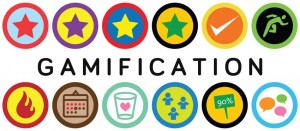Gamification: A Quest in Instructional Design
What motivates people to persevere through difficult tasks they otherwise would not want to do? It’s a question the gaming world seems to have conquered and a concept which has recently gained traction in education. Serious games have a lot to teach educators about providing students with a sense of agency and the freedom to fail, behaviour modification practices, and unfolding learning in an immersive storyline supported by a social community.
Though gamified learning is not simply playing video games in the classroom – it is applying game-design thinking and game mechanics on a large scale to engage users in solving problems and increase their self contributions. Learn how to use the power of games to empower your students. This course is appropriate for all K-12 teachers, postsecondary educators, technology coaches, and those in related fields.
Learning Objectives
To emerge victorious, participants will:
- Distinguish between gamification, game-based learning, and game simulations
- Investigate the principles of gamification and game mechanics
- Understand how elements could be applied to educational settings
- Explore authentic gamified learning projects
- Apply gamification principles to a unit of study
- Experience first-hand a gamified course about gamification!

Introduction (1hr)
Complete the following tasks to begin your journey.
- Create an introduction slide about yourself in the Google slideshow shared with you
- e.g. location, job, hobbies, social media contact info, photo
- Explain why you have chosen to take this course and what you hope to get out of it
LEVEL 1: What is Gamification? (2hr)
Earn 20 points to unlock this level. For each task, design a slide in your presentation.
- Define gamification in your own words (5 points)
- Provide an example* of gamification (5 points)
- Define game-based learning (5 points)
- Provide an example* of GBL (5 points)
- Define game simulations (5 points)
- Provide an example* of a game simulation (5 points)
- Define game mechanics (5 points)
- Reference an academic source (5 points)
* Examples do not need to be from a classroom context or related to education.
Less is more. Write a script in the footnotes of your slides to keep the presentation visually appealing. Use proper citations to reference any sources.
Resources
Read/watch what you need to complete your tasks.
- Wikipedia page
- Extra Credits YouTube Videos
- Karl Kapp YouTube video
- Academic paper
- Blog post w/ infographic
INTRODUCTION
This course has been designed for 21st Century Learning International, an education company based in Southeast Asia that facilitates educational conferences, networking events, research and big data analysis, and technology consultation for primarily international schools. In February 2016, the company launched online asynchronous professional development courses for educators. I was asked to design a course based on the popularity of a conference presentation I led on gamified learning.
The popularity of gamification and game-based learning approaches to education have gained a lot of attention in the last few years. The New Media Consortium’s 2014 report Technology Outlook: International Schools in Asia listed games and gamification as having a “one year or less” time-to-adoption outlook (Johnson et al). The NMC Horizon Report: 2015 K-12 Edition report claims that “in recent years, games and game development have proven to be a viable means of engaging learners in creation and play at the same time” (Johnson et al). This course capitalizes on this trends in education and is meant to be a practical introduction to the concepts of gamification for K-12 teachers, postsecondary educators, technology coaches, and those in related fields.
SELF-DIRECTED LEARNING
To offer a more flexible and personalized learning experience to replace the “one-size-fits-all” principle of LMS architecture, I have taken into consideration trends in elearning while designing this course. Specifically, I have chosen to focus on self-directed and personalized learning which has been said to be a trend which may mean the end for LMS (Spiro, 2014). Well-designed games allow for players to “construct understanding actively, and at individual paces, and. . . enable players to advance on different paths at different rates in response to each player’s interests and abilities (Klopfer et al, 2009). Thus it would make sense that a course about gamification would capitalize on such principles to engage participants in the content.
This course is designed to be asynchronous and encourages participants to complete the learning tasks at their own pace. As Bates (2014) suggests, “just adding technology to the mix, or delivering the same design online, does not automatically result in meeting changing needs”. Thus I strived to change the format of learning for this online environment so it is more individualized for each participant. To begin, I opted for a competency-based learning approach which begins by identifying specific competencies or skills, and enables learners to develop mastery of each competency or skill at their own pace (Bates, 2014). I outlined these competencies in various modules or “levels” and assigned point values for tasks to demonstrate understanding of the concepts. Students can decide which combination tasks they would like to complete and what content to read or watch to complete such tasks. Following an outline for instructional design for web-based training, I plan to encourage self-directed learning by allowing students to select only the content they need, skip content they don’t need, define their own unique paths through the content, and explore related links throughout the course to complete their missions (Conrad, 2000).
I have attempted to balance linear and non-linear learning paths of the course by standardizing the entrance so that all students begin with introductions so I can get to know them and a little about their backgrounds (Conrad, 2000). I also attempted to minimize the navigation through the course by listing all activities and readings for each module on a single page. I plan to maintain consistency and establish a routine throughout the course by required participants to choose their tasks and show their learning by adding a slide to a presentation they will complete through the course. This strategy also orients the learner as the learning is grounded in an authentic task which contextualizes what is being learned. Other functions of the LMS such as a progress bar will be used to further orient the learner during the course. Each learning module further emphasizes main points and tasks, conveys relationships among instructional elements, appeals to learners’ pre training knowledge and skills by allowing them to build on their existing knowledge, reflects on how the skills and knowledge will be applied post training by applying this new information to redesigning a unit of instruction and progresses in a logical order at each student’s own pace (Conrad, 2000). Ciampa (2013) claims that challenge, curiosity and most importantly control can lead to learners who are intrinsically motivated which is the end goal of not only this course but gamification in its entirety.
INTRINSIC AND EXTRINSIC MOTIVATION
Gamification is the concept of applying game-design thinking and game elements to engage users in solving problems and increase users’ self contributions (Deterding et al, 2009). The main underlying principle of gamification is to motivate users. Deci and Ryan (1985) have noted that “self-determined learner behaviour can stem from both intrinsic motivation (i.e., the learner engages in an activity because it is interesting or enjoyable) and from extrinsic motivation (i.e., the learner engages in an activity because he or she desires the outcome and wants to achieve some instrumental end such as earning a reward)” (Anderson, 2008).
This course aims to engage learners by having participants experience motivators as students themselves; this is a gamified course about gamification which incorporates both types of motivation. To intrinsically motivate learners, I have providing the challenge of unlocking various module levels and applying learning to redesigning a unit, sparking curiosity in the topic by providing a variety of multimedia and text-based content, and giving participants control over their learning (Ciampa, 2013). Extrinsic motivators include a mastery orientation, recognition for their work through the unlocking of levels and badge earning, as well as recognition from participants’ professional community through designing a presentation to his or her peers about the topic.
ONGOING FEEDBACK
Feedback is a key component of this course to provide timely formative assessment that students can apply to their future work. In video games, players are constantly working within a feedback loop that supports learning. Since the cycle between choice and result is much shorter in video games than in life, hypotheses are regularly tested and refined, lowering the emotional stake of failing and encouraging risk taking (Jenkins, 2009). With this increased willingness to experiment, players continue to make choices, contextualizing facts and information as tools for problem solving (Gee, 2003). Chickering and Ehrmann (1996) list contact with faculty and providing prompt feedback to students as two of the principles for good practice in post- secondary education.
However, as Gibbs and Simpson (2005) point out, the key to an effectively designed course is to generate engagement with learning tasks without generating pile of marking for the instructor. Instead of assigning large projects for students to complete, learners build on a single slideshow presentation for the duration of the course. This setup allows the teacher to periodically check for understanding and provide timely feedback to students that can be directly applied to students’ work. Gibbs and SImpson (2005) continue by stating that “students consider coursework to be fairer than exams, to measure a greater range of abilities than exams and to allow students to organize their own work patterns to a greater extent”. In addition, I have limited the course’s reliance on forms of assessment which can be automatically ‘‘corrected’’ in a pursuit of more authentic learning experiences (Spiro, 2014). Students can cope without much, or even any, face-to-face teaching, but they cannot cope without regular feedback on assignments.
References
Anderson, T. (2008). Towards a theory of online learning. In T. Anderson & F. Elloumi (Eds.), Theory and practice of online learning. Edmonton AB: Athabasca University.
Bates, T. (2014). Chapter 4: Methods of teaching with an online focus. Teaching in a Digital Age.
Chickering, A. W., & Ehrmann, S., C. (1996). Implementing the seven principles: Technology as lever. American Association for Higher Education Bulletin, 49(2), 3-6.
Ciampa, K. (2013). Learning in a mobile age: An investigation of student motivation. Journal of Computer Assisted Learning, 30(1), 82–96.
Coates, H., James, R., & Baldwin, G. (2005). A critical examination of the effects of Learning Management Systems on university teaching and learning. Tertiary Education and Management, 11,(1), 19-36.
Conrad, K. (2000). Instructional Design for Web-Based Training. Chapter 5: Defining Learning Paths. Pp. 111-136, topics: Developing Content Outline, and Documenting Design Decisions. (Repository, Connect).
Deci, E. L., & Ryan, R. M. (1985). Intrinsic motivation and self-determination in human behavior. New York: Plenum.
Deterding, S., Sicart, M., Nacke, L., O’Hara, K. & Dixon, D. (2009). Gamification: Using game design elements in non-gaming contexts. Vancouver: CHI.
Gee, J.P. (2003). What video games can teach us about literacy and learning. New York: Palgrave-Macmillan.
Gibbs, G., & Simpson, C. (2005). Conditions under which assessment supports students’ learning. Learning and Teaching in Higher Education, 1(1), 3-31.
Jenkins, H. (2009). Confronting the challenges of participatory culture: Media Education for the 21st century. Cambridge, MA: MIT Press.
Johnson, L., Adams Becker, S., Cummins, M., and Estrada, V. (2014). 2014 NMC Technology Outlook for International Schools in Asia: A Horizon Project Regional Report. Austin, Texas: The New Media Consortium.
Johnson, L., Adams Becker, S., Estrada, V., and Freeman, A. (2015). NMC Horizon Report: 2015 K-12 Edition. Austin, Texas: The New Media Consortium.
Klopfer, E., Osterweil, S. and Salen, K. (2009). Moving learning games forward: Obstacles, opportunities & openness. The Education Arcade. Cambridge, MA: MIT Press.
New London Group. (1996). A pedagogy of multiliteracies: Designing social futures. Harvard Educational Review. 66(1), 60-92.
Spiro, K. (2014). 5 elearning trends leading to the end of the Learning Management Systems. (web page)
See full details here:
https://docs.google.com/document/d/1YK1UVr0PCddGrYO2J1URoNOrfD2LyGmaoZcIL22JmYA/edit?usp=sharing
